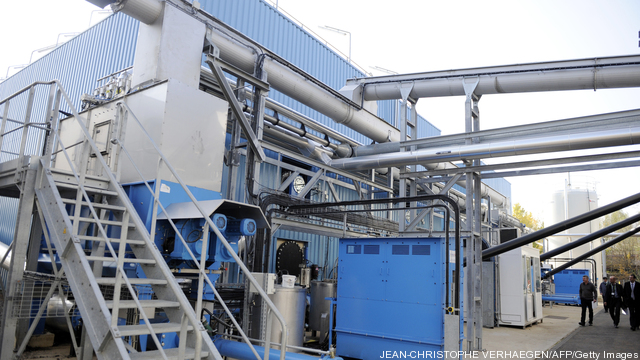
Few innovations hold more promise than alternative fuels. The prospect of driving our cars on clean, renewable fuel has tremendous appeal. Yet few technologies have had more hype and disappointment than biofuels. And given all the fits and starts in the renewable fuel category it’s easy to be skeptical about the future of biofuel. Today, there is reason to renew hope. The breakthrough innovations we have all been waiting for to make clean, renewable fuel are finally becoming reality. Here is a look at five myths surrounding biofuels that can now be debunked based on new thinking and new technological advancements:
Myth #1: Producing biofuel takes valuable food out of the food supply and is inefficient use of farm land.
Known as the food vs. fuel debate, corn-based ethanol represents an unattractive option for scaling alternative fuel beyond the current blend rates of 10-percent at the pump. Currently, approximately 40% of corn grown in the U.S. goes to making ethanol. According to The Economist, if goals to produce 36 billion gallons of fuel are to become reality, then the U.S. would need to devote 100% of its corn production to make fuel.
Reality: The technology for converting biomass to fuel has evolved rapidly and non-food farm waste such as corn stover (stripped corn cobs) and wood chips can now be successfully converted into biofuel. The benefits of using agricultural waste and fast growing, high yield plants such as Miscanthus as a fuel source is clear – no new food crops need to be planted, so no additional land needs to be used for the purpose of generating fuel.
Myth #2: Biofuels require changes to vehicle engines.
Currently only 3.3% of cars in the U.S. can run on flex-fuel, according to Wikipedia, and overhauling the design of the more than one billion cars on the road globally to run on biofuel isn’t practical or even possible. Moreover, as The Economist pointed out, a gallon of ethanol has 33% less energy than gasoline, and delivers between 5 – 10% fewer miles per gallon in a 10% ethanol-gasoline blend. The health and environmental effects of burning ethanol fuel are also concerning.
Reality: A workable solution must involve an alternative fuel that is a “drop-in fuel”– able to be used directly in any vehicle just like regular gasoline. Technologies and methods now exist to convert biomass to high-octane gasoline that can power any vehicle on the road.
Myth #3: Government subsidies are needed.
To witness economists and politicians decrying corn-based ethanol production as a stealth subsidy to the industrialized farming sector, look no further than the debates on Capitol Hill. But that doesn’t mean every alternative fuel is designed with government handouts in mind. Subsidies distort markets and deliver investment dollars in sub-optimal ways. Free markets are generally better at capital allocation and bringing new technologies to market.
Reality: A subsidy-free approach that aims at helping local communities become energy independent by converting non-food biomass to fuel on a commercial scale without the need for government subsidies does exist. The road to kicking the renewable energy subsidy habit means finding technological breakthroughs that dramatically disrupt current approaches of alternative fuel production.
Myth #4: It requires hundreds of millions of dollars to build a bio refinery:
One of the challenges with alternative fuel production is the perception that huge capital investments are required to make fuel at commercial scale. An example of this is BP’s $300 million investment in its cellulosic project in Highlands County, Florida, a venture that BP backed out of last month. Given the current capital-constrained investment climate, approaches that require mega-million dollar investments will be non-starters.
Reality: An innovative approach to solving this problem is to build low-cost, mobile refineries that bring refining capacity to the biomass source, rather than conventional approaches that propose trucking low-value biomass hundreds of miles to a centralized refinery.
Myth #5: Biofuel production is at best carbon neutral, but probably much worse.
The problem of climate change is so urgent and all-encompassing that any scalable solution must do much more than make incremental progress. We need to think creatively about how carbon emissions and costs can be reduced every step of the way.
Reality: Use biochar, the by-product of developing biofuel, as a soil enhancer. With its high surface area and hydrophilic properties, biochar is a potential game changer. Not only can it dramatically improve the world’s most unproductive deserts into arable land, but biochar actually sequesters carbon in the ground. Biochar expert, Johannes Lehmann, Associate Professor, Department of Crop and Soil Sciences, wrote an excellent research paper, A Handful of Carbon, which demonstrates that at full-lifecycle, the possibility of creating fuel that is carbon-negative is now possible.
Mike Cheiky, Chairman, Founder and CTO of Cool Planet Energy Systems, is the only two-time World Economic Forum Technology Pioneer in the Energy and Environment category (2009, 2011). Mr. Cheiky holds 50 issued patents, several pending, and is cited in 450 additional patents. Mr. Cheiky holds a BA in Physics from Hiram College.
